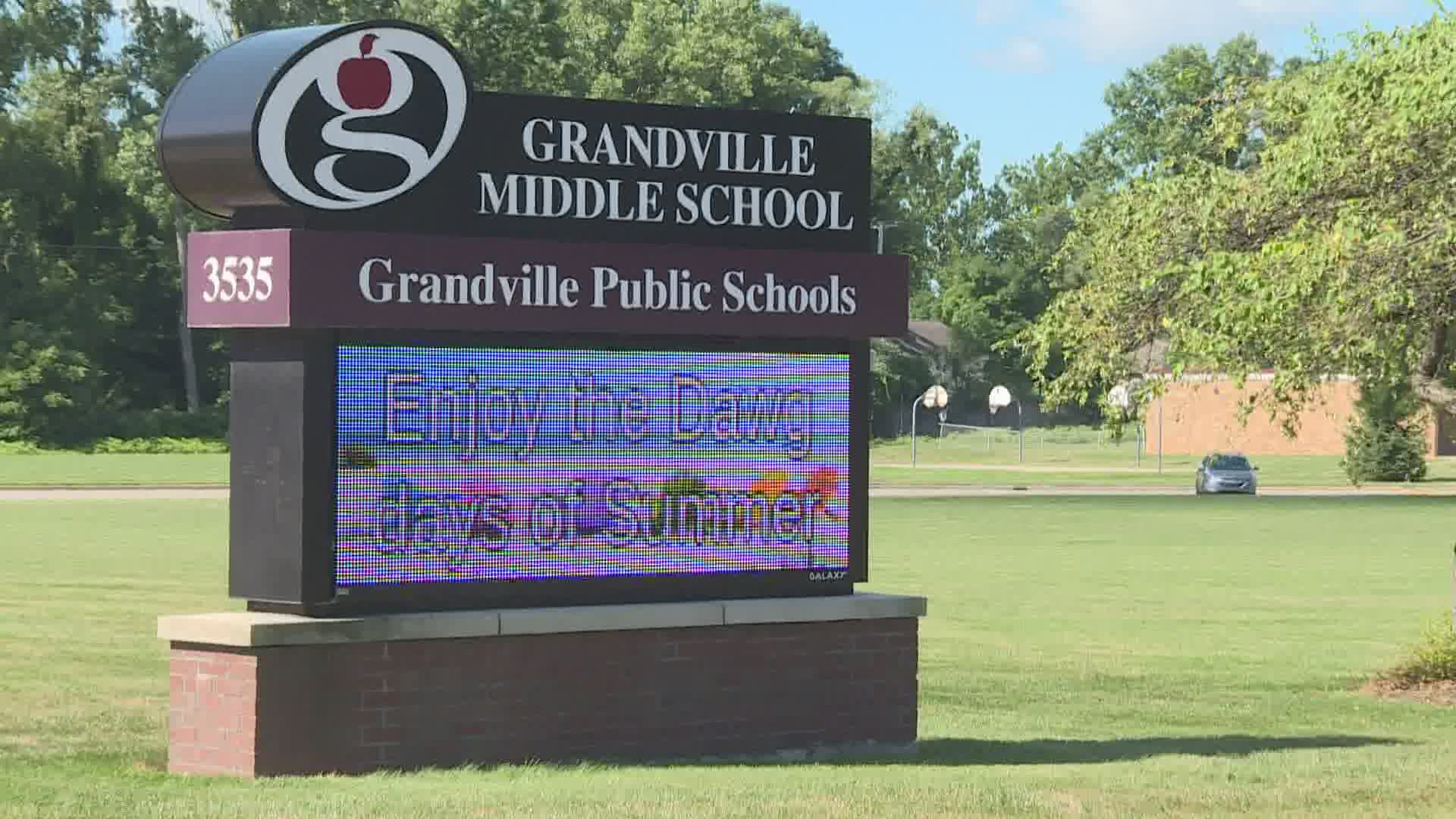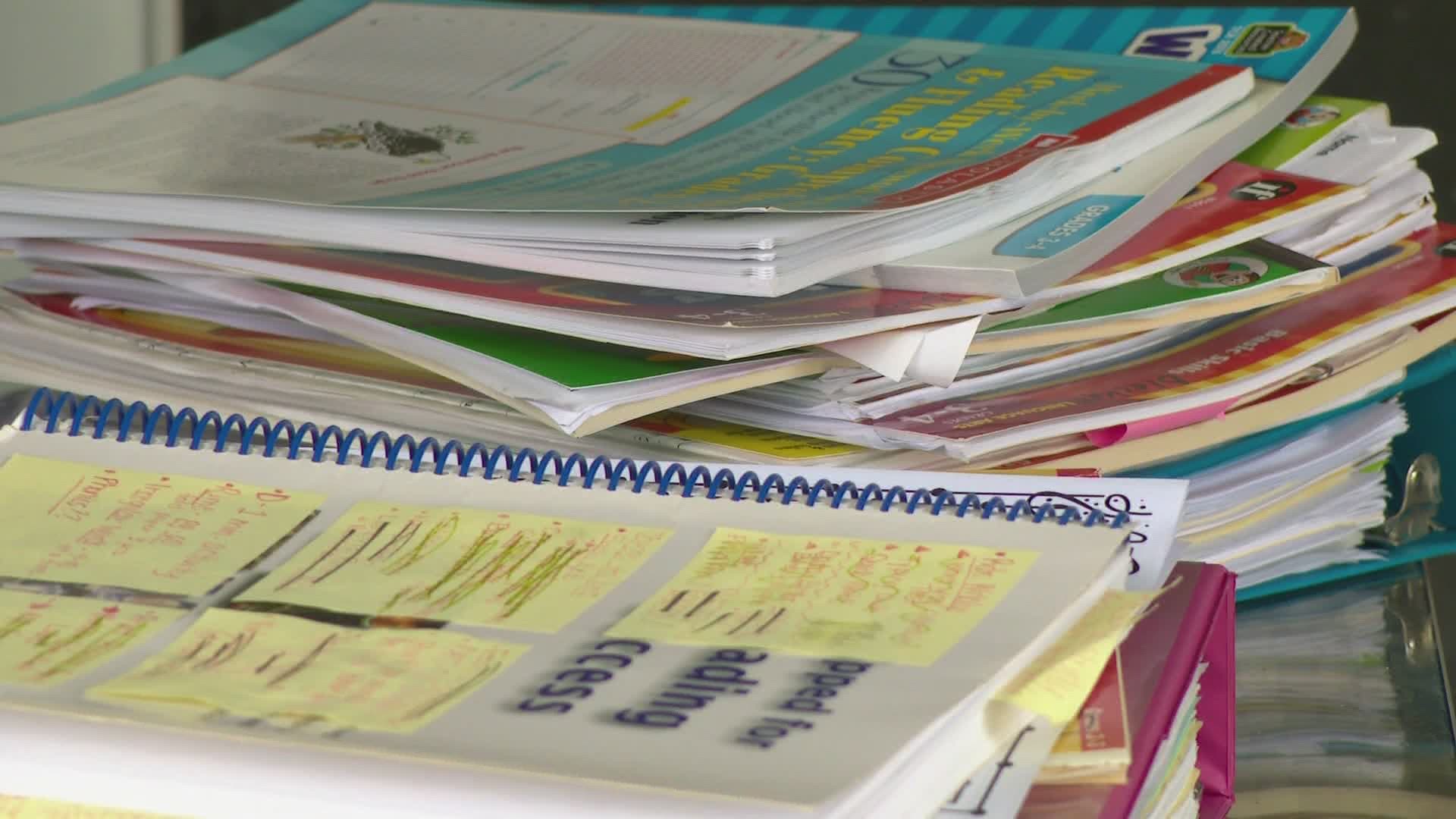GRANDVILLE, Mich — School starts in a few short weeks. It’s been a national debate, as districts and officials work to finalize plans, President Donald Trump pushes for them to completely reopen.
In the middle of it all, are teachers. Blake Mazurek has been a grade school teacher for almost three decades.
“We get right into Thomas Jefferson.” Mazurek said. “It's my hook to get them into the challenges and the richness of what history can be, and that is done in person.”
He's a history buff at Grandville middle, as well as the Grandville Education Association President.
“All teachers, we do our best work with our students in person,” he said. “That's the nature of our craft.”
No school year has ever started like this. When asked if he will be returning to his classroom, Mazurek said he plans on it right now.
“If school were starting today, you're asking a very difficult question,” he said.
The CDC's new guidance pushes in-person classes. In an interview with Good Morning America, Robert Redfield, the Director of the Centers for Disease Control and Prevention, said it’s important to open schools.
Recommendations include wearing face coverings and changing layouts.
“It’s so important now to work together with school districts to figure out how they can take our guidelines, and operationalize them in a practical way,” Redfield said.
“Our buildings are not designed for six feet apart,” Mazurek said.
It’s up to the districts to provide everything from PPE to cleaning supplies, while facing millions of dollars in budget cuts.
“The bids were coming in somewhere in the range of half a million dollars, just for plexiglass dividers,” Mazurek said. “We have schools opening across the country within weeks, and we still are waiting to hear from the federal government, will there be assistance to help our schools?”
The latest coronavirus relief bill from the White House and Senate Republicans, includes more than $100 billion for schools, with $70 billion for K-12. More money would go to schools that reopen.
The CDC cites evidence, kids are less likely to get severely sick from COVID-19.
“It’s not public health, versus opening the schools for the economy,” Redfield said. “It’s public health, versus public health.”
The CDC reports the social, emotional and academic costs of keeping schools closed are significant.
“I do have some concerns as an individual because of a loved one that I live with, who has health issues,” Mazurek said. “And I have to take that into consideration.”
Mazurek typically has 150 students shuffling through his classroom a day. 150 ways to catch COVID-19.
“Teachers feel as if we become expendable,” Mazurek said. “Teachers feel that our students’ health, our staff health, is secondary to the political expediency of improving the economy.”
But he says state officials and administrators have been working for months to prepare, and provide the best education in the safest way possible.
“I want to assure our community members and our parents, their child, their children, are our number one priority,” he said.
RELATED VIDEO:
►Make it easy to keep up to date with more stories like this. Download the 13 ON YOUR SIDE app now.
Have a news tip? Email news@13onyourside.com, visit our Facebook page or Twitter. Subscribe to our YouTube channel.


